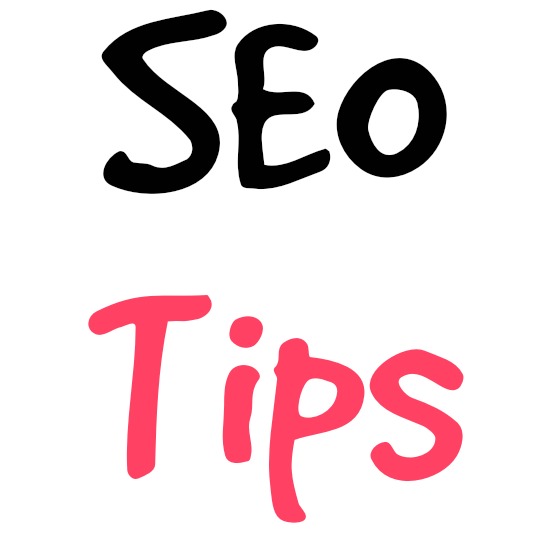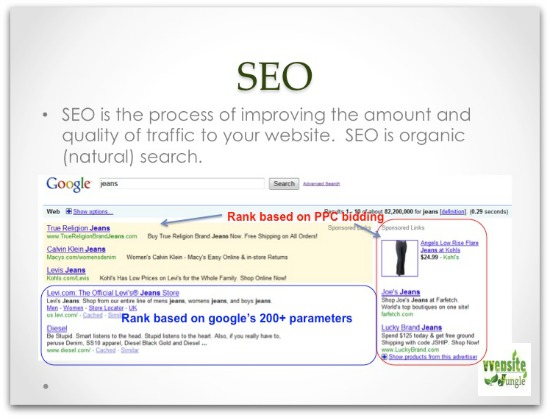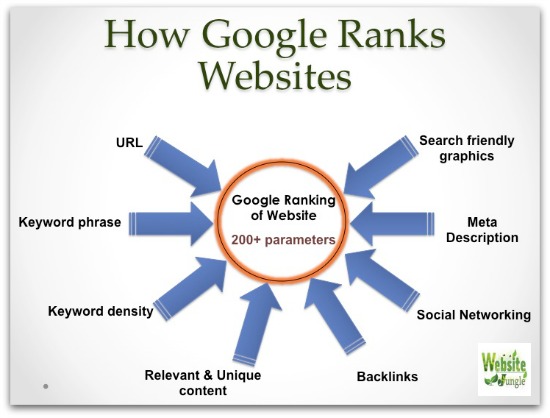
SEO or Search Engine Optimization is a hot topic these days. Everyone wants to know what they need to do to have a strong online presence in order to connect with potential customers. Let’s start off with a definition.
What is SEO? SEO is the process of improving the amount and quality of traffic to your website. SEO is organic (natural search).

Google looks at 200+ parameters when ranking a website.

To summarize, effective SEO is about content strategy and has 3 main components: 1. Links
2. Content
3. Social Media But SEO is more than just content strategy. It is a comprehensive approach to optimizing an entire web presence for organic search. To do this effectively requires the implementation of both on-site and off-site strategies. Here is a high-level list of the
on-site SEO strategies that will be beneficial for both readers and search engines: 1.
Keywords • Performing keyword research is the first step for successful SEO strategy
• Use Google Adwords Keyword Planner to evaluate the competitiveness of words 2.
Produce original content • Publishing blog content, case studies and videos consistently will help to increase organic search traffic 3.
Meta Description • Utilize key words in meta descriptions
• Keep meta descriptions to 155 characters
• Write a unique meta description for each page
•
Tip: Meta descriptions should be written for users in mind and not search engines specifically 4.
Title tag • The title tag is the clickable text that appears in search engine results, so writing an enticing and relevant title tag is key
• Utilize relevant keywords strategically
• Use your company’s name at the beginning of your home page title tag but for internal pages, include it at the end of the title tag
• Keep title tags to 65 characters 5.
Product images • Embed quality images for positive user experience
• Image names should be relevant and descriptive i.e. instead of Image1.jpg, rename image to Red-Sofa-Collection.jpg
• Where appropriate, use keywords in your image names
• Populate the Alt-Text field with a relevant description of what the image is about. Use keywords, but don’t keyword stuff. Keep Alt-Text descriptions to 140 characters. 6.
Site map • Have a site map on the home page as well as an XML site map inside the code 7.
301 redirect • Implement a permanent redirect from one URL to another 8. Fix
missing page (404 errors) errors and ensure the URL redirects to the home page or other relevant page Here is a list of
off-site SEO strategies you can implement to market your website, get ranked in search engines and build an online reputation/brand: 1.
Back-linking • Have quality links that point to your website
• Build back links by submitting press releases, submit to popular blogs 2.
Social media • Having a strong social media presence sends search engines signals of influence and authority
• Add Google + to social media strategy 3.
Consumer reviews • Encourage testimonials and reviews from your customers on popular review sites such as Yelp, Trip Advisor, City Search 4.
Search engine submissions / directory listings (DMOZ)
 SEO or Search Engine Optimization is a hot topic these days. Everyone wants to know what they need to do to have a strong online presence in order to connect with potential customers. Let’s start off with a definition. What is SEO? SEO is the process of improving the amount and quality of traffic to your website. SEO is organic (natural search).
SEO or Search Engine Optimization is a hot topic these days. Everyone wants to know what they need to do to have a strong online presence in order to connect with potential customers. Let’s start off with a definition. What is SEO? SEO is the process of improving the amount and quality of traffic to your website. SEO is organic (natural search).  Google looks at 200+ parameters when ranking a website.
Google looks at 200+ parameters when ranking a website.  To summarize, effective SEO is about content strategy and has 3 main components: 1. Links
2. Content
3. Social Media But SEO is more than just content strategy. It is a comprehensive approach to optimizing an entire web presence for organic search. To do this effectively requires the implementation of both on-site and off-site strategies. Here is a high-level list of the on-site SEO strategies that will be beneficial for both readers and search engines: 1. Keywords • Performing keyword research is the first step for successful SEO strategy
• Use Google Adwords Keyword Planner to evaluate the competitiveness of words 2. Produce original content • Publishing blog content, case studies and videos consistently will help to increase organic search traffic 3. Meta Description • Utilize key words in meta descriptions
• Keep meta descriptions to 155 characters
• Write a unique meta description for each page
• Tip: Meta descriptions should be written for users in mind and not search engines specifically 4. Title tag • The title tag is the clickable text that appears in search engine results, so writing an enticing and relevant title tag is key
• Utilize relevant keywords strategically
• Use your company’s name at the beginning of your home page title tag but for internal pages, include it at the end of the title tag
• Keep title tags to 65 characters 5. Product images • Embed quality images for positive user experience
• Image names should be relevant and descriptive i.e. instead of Image1.jpg, rename image to Red-Sofa-Collection.jpg
• Where appropriate, use keywords in your image names
• Populate the Alt-Text field with a relevant description of what the image is about. Use keywords, but don’t keyword stuff. Keep Alt-Text descriptions to 140 characters. 6. Site map • Have a site map on the home page as well as an XML site map inside the code 7. 301 redirect • Implement a permanent redirect from one URL to another 8. Fix missing page (404 errors) errors and ensure the URL redirects to the home page or other relevant page Here is a list of off-site SEO strategies you can implement to market your website, get ranked in search engines and build an online reputation/brand: 1. Back-linking • Have quality links that point to your website
• Build back links by submitting press releases, submit to popular blogs 2. Social media • Having a strong social media presence sends search engines signals of influence and authority
• Add Google + to social media strategy 3. Consumer reviews • Encourage testimonials and reviews from your customers on popular review sites such as Yelp, Trip Advisor, City Search 4. Search engine submissions / directory listings (DMOZ)
To summarize, effective SEO is about content strategy and has 3 main components: 1. Links
2. Content
3. Social Media But SEO is more than just content strategy. It is a comprehensive approach to optimizing an entire web presence for organic search. To do this effectively requires the implementation of both on-site and off-site strategies. Here is a high-level list of the on-site SEO strategies that will be beneficial for both readers and search engines: 1. Keywords • Performing keyword research is the first step for successful SEO strategy
• Use Google Adwords Keyword Planner to evaluate the competitiveness of words 2. Produce original content • Publishing blog content, case studies and videos consistently will help to increase organic search traffic 3. Meta Description • Utilize key words in meta descriptions
• Keep meta descriptions to 155 characters
• Write a unique meta description for each page
• Tip: Meta descriptions should be written for users in mind and not search engines specifically 4. Title tag • The title tag is the clickable text that appears in search engine results, so writing an enticing and relevant title tag is key
• Utilize relevant keywords strategically
• Use your company’s name at the beginning of your home page title tag but for internal pages, include it at the end of the title tag
• Keep title tags to 65 characters 5. Product images • Embed quality images for positive user experience
• Image names should be relevant and descriptive i.e. instead of Image1.jpg, rename image to Red-Sofa-Collection.jpg
• Where appropriate, use keywords in your image names
• Populate the Alt-Text field with a relevant description of what the image is about. Use keywords, but don’t keyword stuff. Keep Alt-Text descriptions to 140 characters. 6. Site map • Have a site map on the home page as well as an XML site map inside the code 7. 301 redirect • Implement a permanent redirect from one URL to another 8. Fix missing page (404 errors) errors and ensure the URL redirects to the home page or other relevant page Here is a list of off-site SEO strategies you can implement to market your website, get ranked in search engines and build an online reputation/brand: 1. Back-linking • Have quality links that point to your website
• Build back links by submitting press releases, submit to popular blogs 2. Social media • Having a strong social media presence sends search engines signals of influence and authority
• Add Google + to social media strategy 3. Consumer reviews • Encourage testimonials and reviews from your customers on popular review sites such as Yelp, Trip Advisor, City Search 4. Search engine submissions / directory listings (DMOZ)